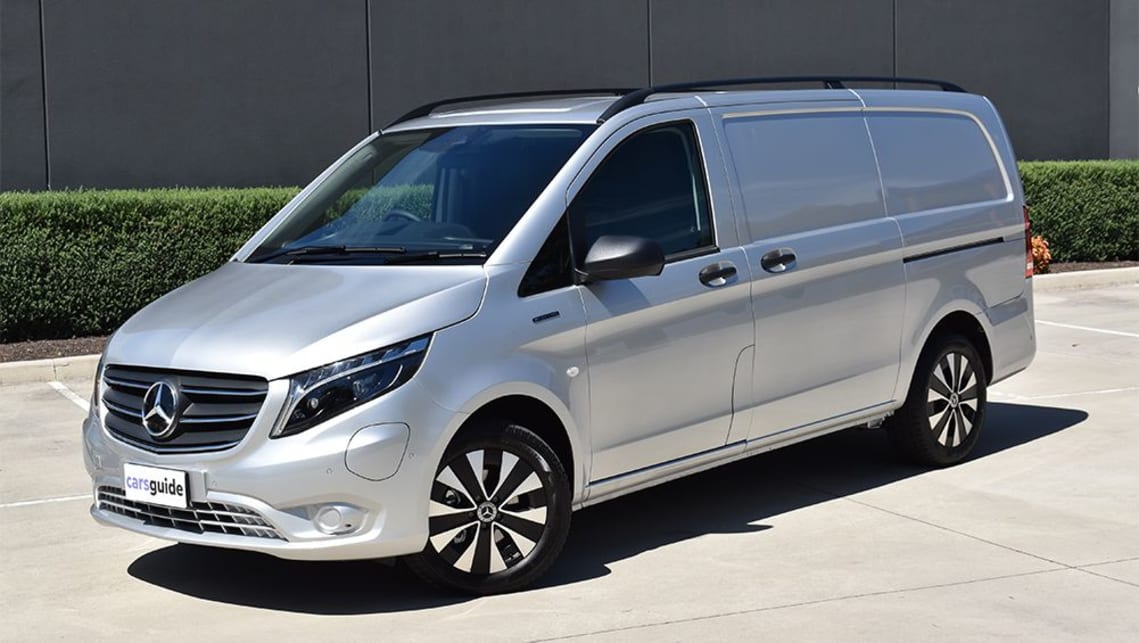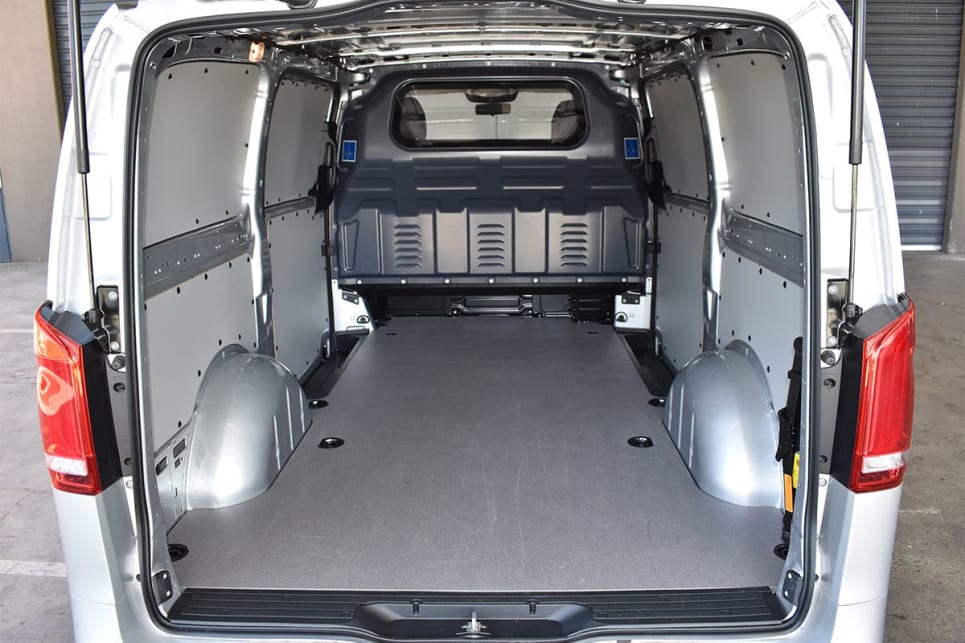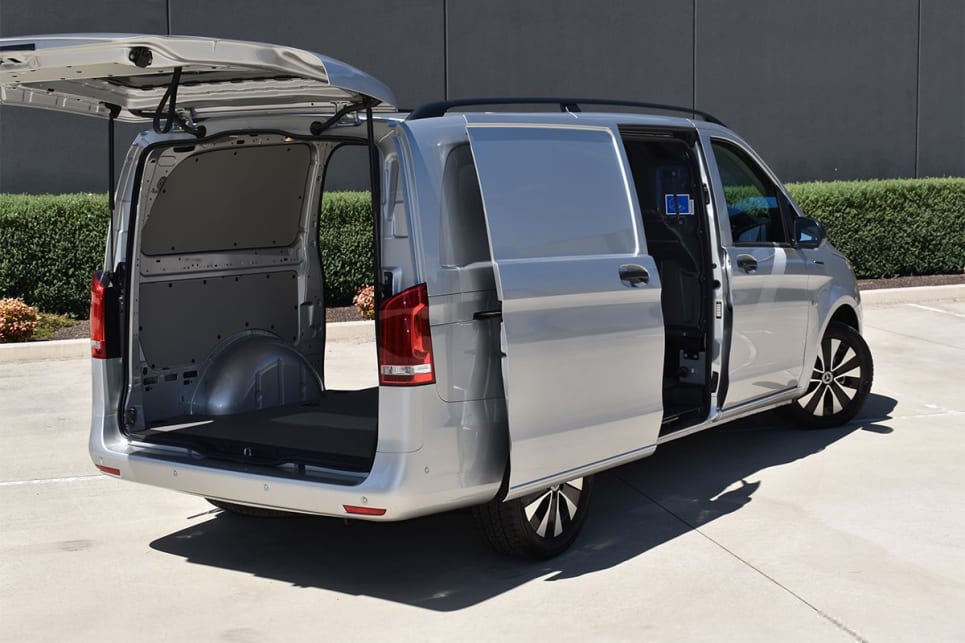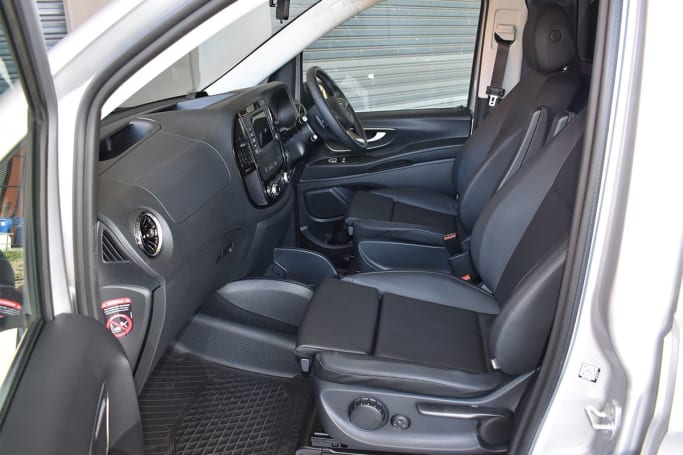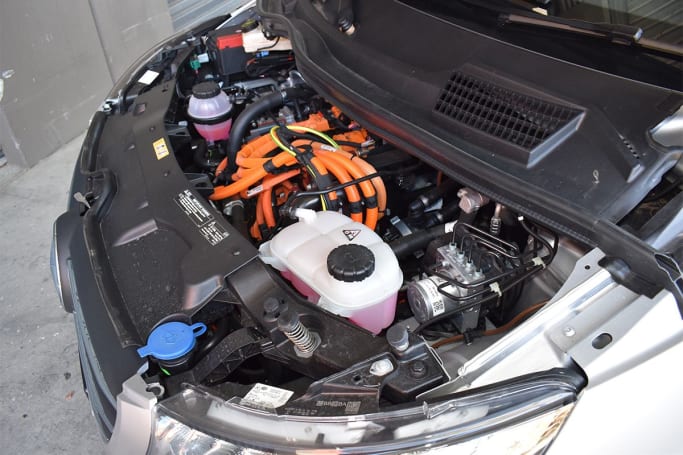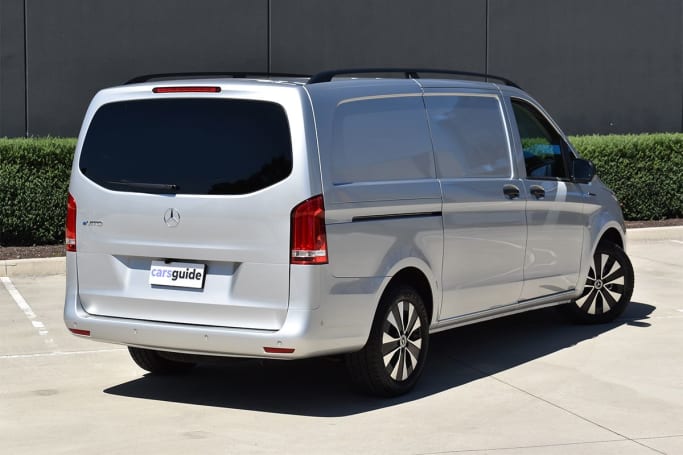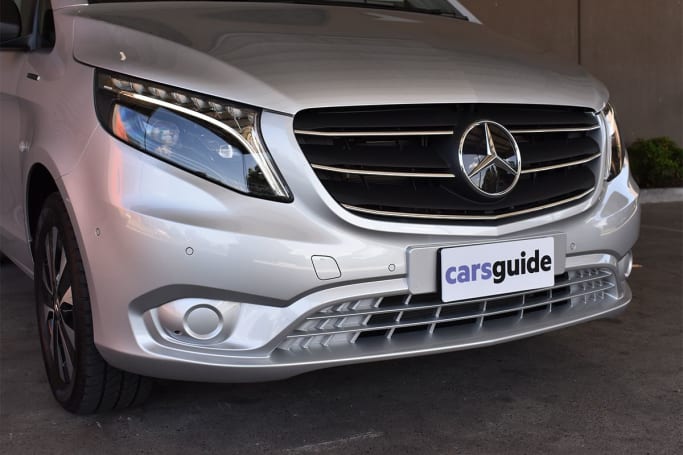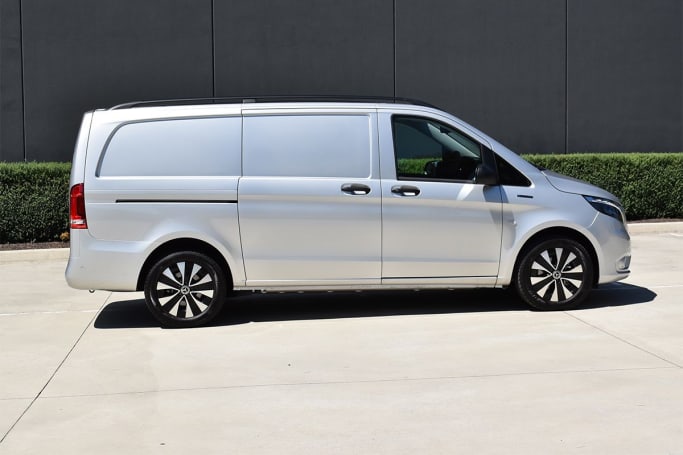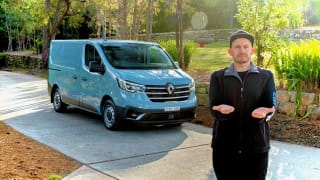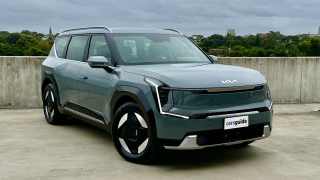Our test vehicle is the eVito Panel Van MWB (Medium Wheel Base), which comes equipped with a single 85kW/360Nm electric motor and a 60kWh battery for an eyebrow-raising list price of $91,051 plus on-road costs.
Our sparkling example looks more upmarket than the standard offering, as it’s equipped with the optional $2779 Sport Package comprising metallic paint (Brilliant Silver on ours), body-coloured front and rear bumpers, black roof rails, fog lamps, black leatherette upholstery and a choice of 17-inch alloy wheels. These good-looking rims are fitted with 225/55R17C Dunlop Econodrive tyres and there’s a standard full-size steel spare.
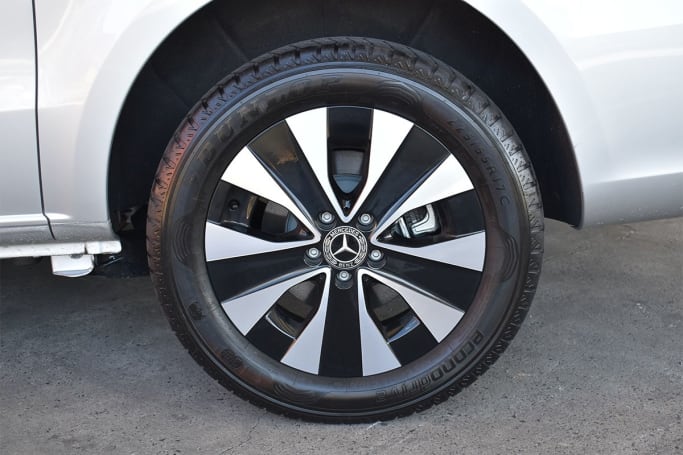
Other options, including premium infotainment and electronic interface functions, cargo bay wood-flooring/LED lighting and more, raise the as-tested list price to $99,871 - which means you’re looking at six figures to drive away in this stylish two-seater.
So, what’s a $100K electric Mercedes-Benz van include as standard equipment? Let’s start with a conspicuously long (8.0 metres) charging cable stored in a vinyl bag. There’s also a chrome grille, tinted windows and heated door mirrors, but headlights/daytime running lights/tail-lights are halogen when you’d expect to see LEDs at this price.
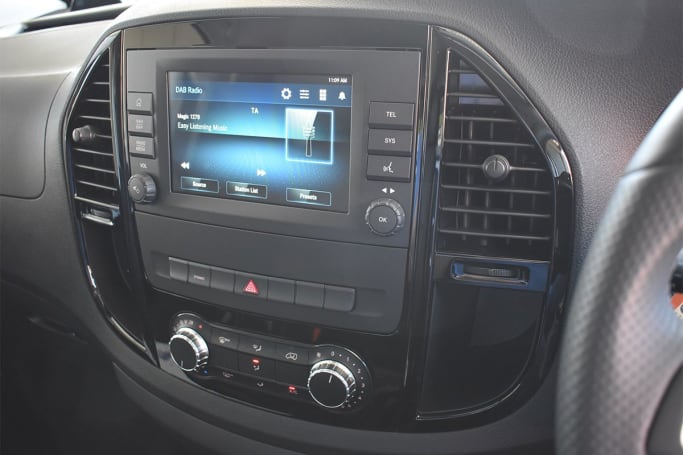
Inside, there’s a full steel bulkhead (with large window) separating the cabin from the cargo bay, a leather-wrapped and two-way adjustable multi-function steering wheel, two USB ports, high-gloss black trim appointments in the upper central console, and a chrome interior package including air-vents, air-con dials, door-handles and surrounds.
Also standard are ‘Comfort’ bucket seats for driver and passenger with heating, base-cushion length adjustment, fold-down inboard armrests and powered adjustments including height/reach lumbar support. The infotainment system has a relatively small 7.0-inch touchscreen, but there’s digital radio, voice command and multiple connectivity including Apple/Android devices.


